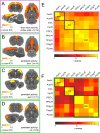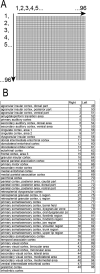Brain states govern the spatio-temporal dynamics of resting-state functional connectivity
- PMID: 32568067
- PMCID: PMC7329332
- DOI: 10.7554/eLife.53186
Brain states govern the spatio-temporal dynamics of resting-state functional connectivity
Abstract
Previously, using simultaneous resting-state functional magnetic resonance imaging (fMRI) and photometry-based neuronal calcium recordings in the anesthetized rat, we identified blood oxygenation level-dependent (BOLD) responses directly related to slow calcium waves, revealing a cortex-wide and spatially organized correlate of locally recorded neuronal activity (Schwalm et al., 2017). Here, using the same techniques, we investigate two distinct cortical activity states: persistent activity, in which compartmentalized network dynamics were observed; and slow wave activity, dominated by a cortex-wide BOLD component, suggesting a strong functional coupling of inter-cortical activity. During slow wave activity, we find a correlation between the occurring slow wave events and the strength of functional connectivity between different cortical areas. These findings suggest that down-up transitions of neuronal excitability can drive cortex-wide functional connectivity. This study provides further evidence that changes in functional connectivity are dependent on the brain's current state, directly linked to the generation of slow waves.
Keywords: brain states; fMRI; functional connectivity; neuroscience; optic-fiber-based calcium recordings; rat; slow oscillations; slow waves.
© 2020, Aedo-Jury et al.
Conflict of interest statement
FA, MS, LH, AS No competing interests declared
Figures









References
-
- Aedo-Jury F, Stroh A. Brain states govern the spatio-temporal dynamics of resting-state functional connectivity. 1.0Github. 2020 https://github.com/Strohlab/connectivityelife - PMC - PubMed
Publication types
MeSH terms
Associated data
Grants and funding
LinkOut - more resources
Full Text Sources

